Get strong, long-lasting retaining walls by learning how to properly build a wall.
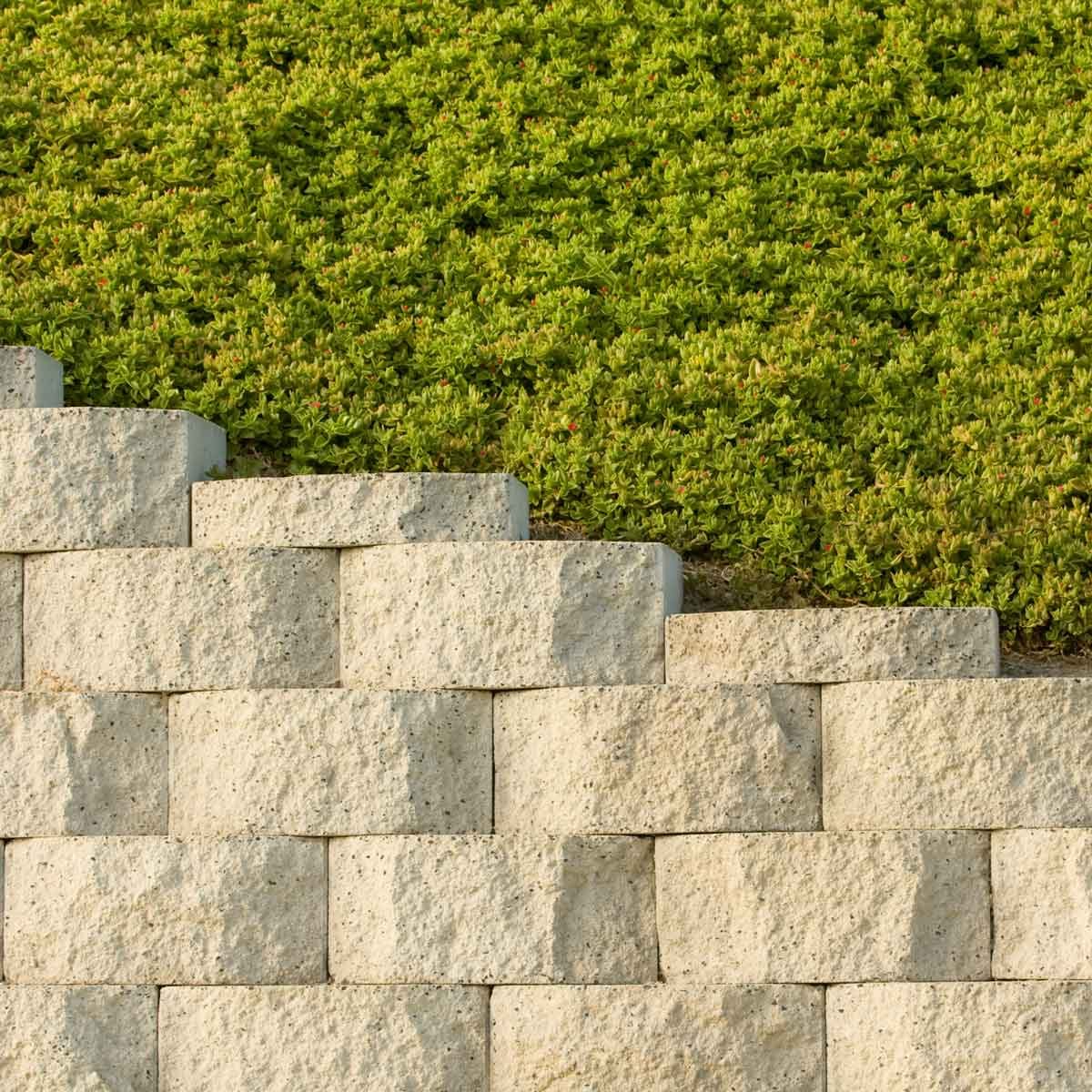
How to Build a Retaining Wall

On This Page
How Soil ‘Pushes’ (and How to Build a Retaining Wall that Pushes Back)
When contemplating how to build a retaining wall, you may imagine how firm and solid it’ll appear from the front, or how great the new garden will look above it. But unless you give serious thought to what goes on behind and below the wall, the retaining wall design may not look good for long. A poor retaining wall design wall can lean, separate, even topple — you don’t want that.
Lots of people think a retaining wall needs to hold back all 6 gazillion tons of soil in the yard behind it. It doesn’t. It only needs to retain a wedge of soil, or elongated wedge of soil, similar to that shown in the image below.
In simple terms: Undisturbed soil — soil that has lain untouched and naturally compacted for thousands of years — has a maximum slope beyond which it won’t ‘hang together’ on its own. This slope is called the failure plane. If left alone, the soil behind the failure plane will stay put on its own. But the soil in front of the failure plane — the natural soil or the fill you’re going to add — wants to slide down the failure plane.
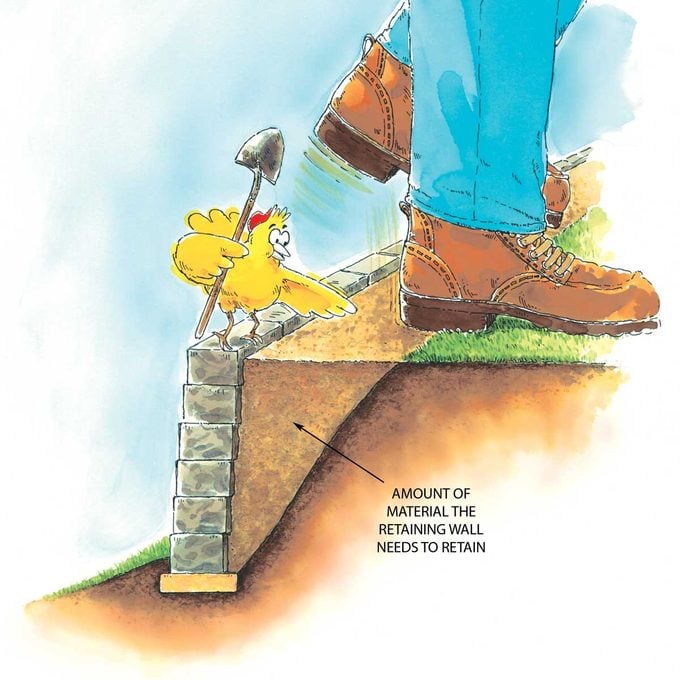
Gravity, along with the slope, directs most of the weight and pressure of the fill toward the lower part of the retaining wall. Since soil weighs a beefy 100-plus lbs. per cu. ft., you need some pretty heavy material — large retaining wall blocks, boulders, timbers or poured concrete — to counteract the pressure. Just as important, it needs to be installed the right way. Here are three key principles in building any solid retaining wall:
- Bury the bottom course, or courses, of the retaining wall one tenth the height of the wall to prevent the soil behind from pushing the bottom out.
- Step back the blocks, rocks or timbers to get gravity working in your favor. This lets the walls lean and push against the fill. Walls built perfectly vertical get gravity working against them the second they start leaning outward even just a bit. Most concrete retaining wall block systems have some kind of built-in lip or pin system that automatically creates the step back as you build.
- Install a base of solidly compacted material so your wall stays flat. A level wall provides modular blocks, stone and timbers with more surface contact with the courses above and below them. They fit together more tightly. The more contact, the more friction and the stronger the wall. Apply these three rules, and you’ll create a strong wall. But even a well built wall won’t survive unless you take care of two troublemakers: water and uncompacted soil.
Uncontrolled Water Weakens Walls
Water can weaken retaining walls by washing out the base material that supports the wall. But far more frequently, it causes problems by building up behind the wall, saturating the soil and applying incredible pressure. That’s when walls start leaning, bulging and toppling. Well built walls are constructed and graded to prevent water from getting behind the wall and to provide a speedy exit route for water that inevitably weasels its way in.
Take a look at the well-drained wall below on the left. The sod and topsoil are almost even with the top block, so surface water flows over the top rather than puddling behind. Just below that is 8 to 12 in. of packed impervious soil to help prevent water from seeping behind the wall. The gravel below that soil gives water that does enter a fast route to the drain tile. And the perforated drain tile collects the water and directs it away from the base of the wall, escorting it out through its open ends. There’s nothing to prevent water from seeping out between the faces of the blocks, either; that helps with the drainage too. The wall even has porous filter fabric to prevent soil from clogging up the gravel. What you’re looking at is a well-drained wall that will last a long time.
Now look at the poorly drained wall below on the right. There’s a dip in the lawn that collects water near the top of the wall. There’s no impervious soil, so the water heads south, slowly water-logging and increasing the weight of the soil packed behind the wall. The homeowner put plastic against the back of the wall to prevent soil from oozing out between the cracks — but it’s also holding water in. Yikes! There’s no drain tile at the bottom — the trapped water can soak, soften and erode the base material. Not only that, an excavated trench that extends below the base lets water soak into the base material and weaken it. You’ve got a retaining wall that has to hold back tons and tons of water and saturated soil — and when that water freezes and expands in the winter, matters get even worse.
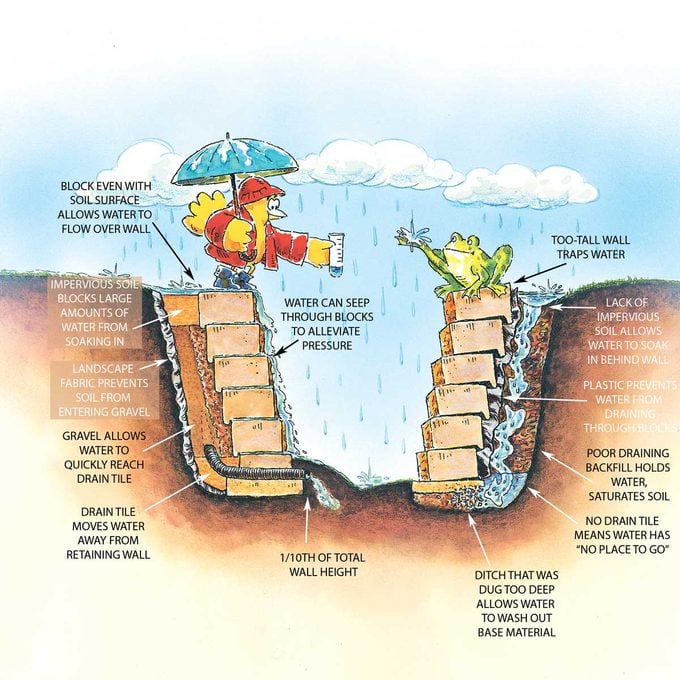
A Well-Built Wall
A strong retaining wall design features well-compacted base material, compacted material in front of the wall to prevent kick-out, and stepped-back materials.
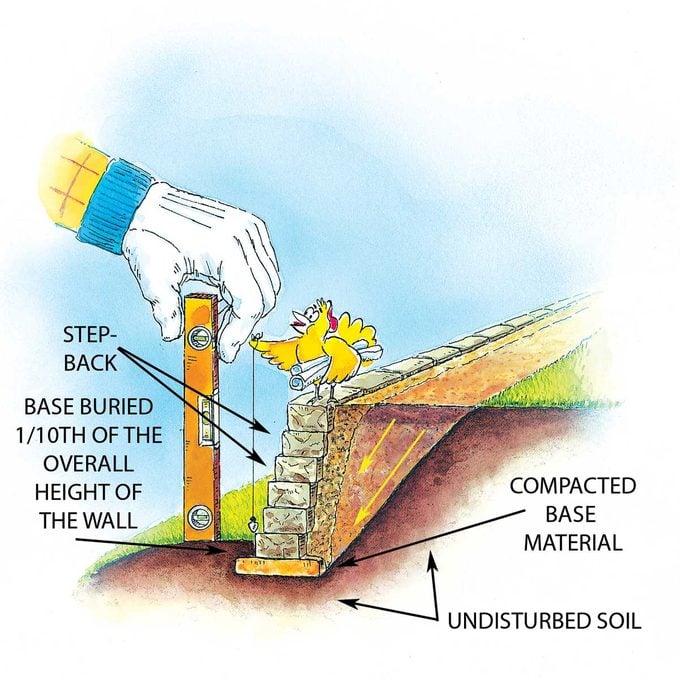
A Poorly Built Wall
A wall that has an uneven base, no compacted material in front of it and no step-back to the materials will eventually fail.
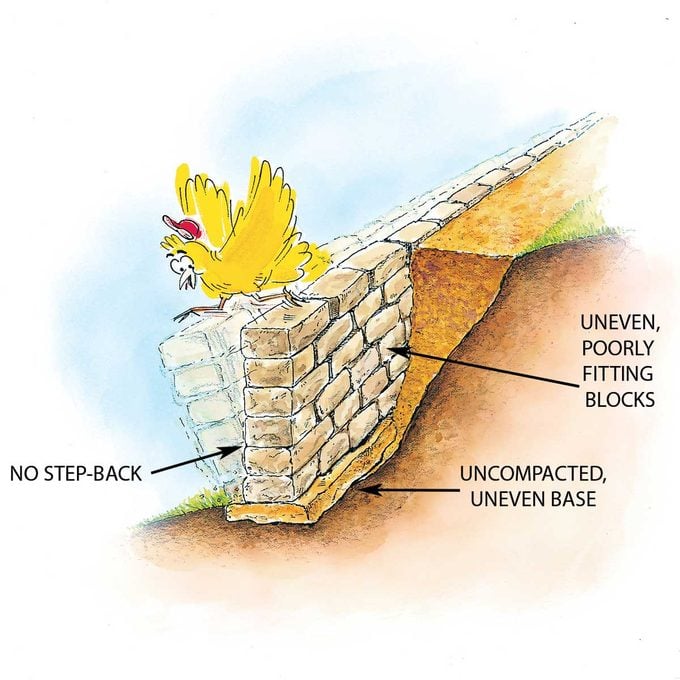
Poor Compaction Adds Pressure to Walls
Even if you have only a small wedge of soil to retain, compaction is important. If your failure plane is farther back so your wall needs to retain more fill, weight and pressure, then compaction and a reinforcing grid become critical. These two things help increase internal friction and direct the pressure of the fill you add downward, rather than at an angle pushing against the wall. Good compaction doesn’t mean dumping a couple of feet of fill behind the wall, then jumping up and down on it in your work boots.
Good compaction means adding 3 or 4 in. of material, compacting it with a heavy, noisy vibrating plate tamper from your friendly neighborhood rental yard, then repeating these steps over and over. Your landscape supplier or block manufacturer (if you’re using modular blocks) can tell you whether you need to install reinforcing grid, and at what intervals. The taller the wall, the more likely you’ll need reinforcing grid.
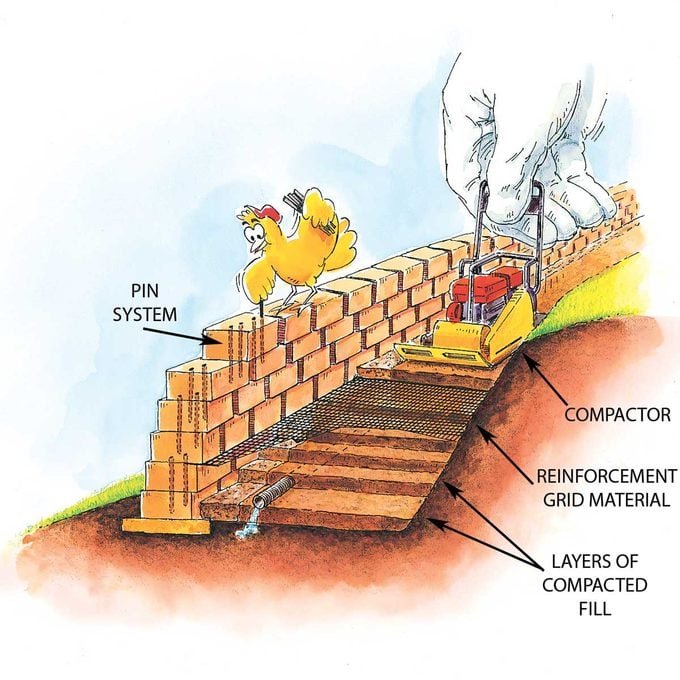
When building a retaining wall, never backfill with, or compact, topsoil; it will break down and settle, creating a water-welcoming trench behind your wall. Use sandy or gravelly materials, which compact much better. And always make certain you don’t become overzealous and compact your wall outward.
Timber Walls, Tall Walls, Building Codes and Other Stuff
By themselves, landscape timbers and a railroad tie retaining wall lack the weight to hold back soil. To make these walls strong, you need to add “dead men,” anchors that lock the wall into the soil behind them. The same pressure that’s pushing against the wall pushes down on the dead men to keep them (and therefore the wall) in place. The principles of stepping back, installing good drainage and compacting also apply to timber walls.
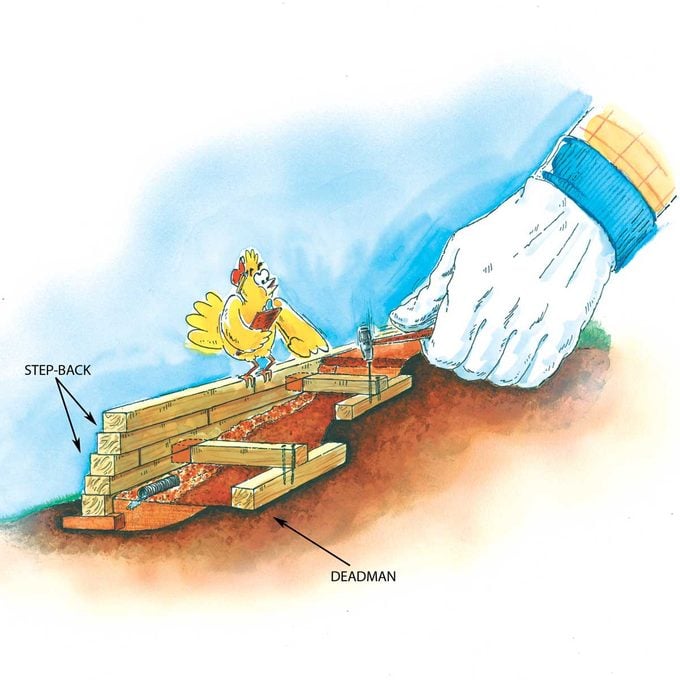
Walls of any material that are taller than 4 ft. play by the same rules — it’s just that the wedge of soil is too big and heavy to be held in place by the weight of the materials alone. Some communities now require building permits and construction details for walls exceeding 4 ft. in height. We think that’s a good idea too. Many modular block manufacturers can supply printed sheets of structural information.
For tall slopes, a series of tiered walls is a good substitute for a single tall wall. But an upper tier can apply pressure to a lower tier unless it’s spaced the proper distance—you know, behind the failure plane. The rule of thumb is to set back the upper wall twice the height of the lower wall.



















